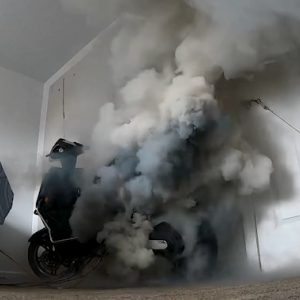
The Impact of Batteries on Fire Dynamics
- Overview
- Updates
- Resources
Battery hazards are a high-profile topic of interest as the number of battery-enabled technologies increases worldwide. Extensive deployment of energy storage systems (ESS) and use of e-mobility devices, which are often powered by lithium-ion batteries, multiplies the dangers of thermal runaway occurring in residential compartments. If lithium-ion batteries are not engineered to prevent thermal runaway and evaluated for safety, they have the potential to go into catastrophic failure and may lead to fire and explosions – endangering occupants and first responders. The likelihood of fire propagation needs further assessment.
To better understand the potential for battery failure, the Fire Safety Research Institute (FSRI), part of UL Research Institutes is researching explosion hazards from lithium-ion batteries in residential settings. The Impact of Batteries on Fire Dynamics research project builds off an existing U.S. Department of Energy project led by UL Solutions which investigates the impact of fire dynamics of lithium-ion batteries in residential compartment fires. The initial research by UL Solutions centers around large-scale experiments simulating a residential ESS installation in an attached two-car garage. Those experiments demonstrate explosion risks when batteries release flammable gas during thermal runaway followed by a delayed ignition of those gases.
In the Impact of Batteries on Fire Dynamics research, FSRI is expanding on the UL Solutions experiments to develop a dataset that will help first responders understand the potential severity of an explosion following a delayed ignition thermal runaway off-gas scenario.
Context
Because of the unique hazards of these batteries, firefighters and other first responders have experienced significant challenges on firegrounds where lithium-ion batteries have been involved.



Research Objectives
Prior research demonstrates propagating thermal runaway in lithium-ion battery packs installed in a residential ESS can generate unprecedented explosion hazards. The Impact of Batteries on Fire Dynamics research project further examines the development and severity of these explosion hazards and seeks to answer the following questions through conducting experiments in residential test compartment settings using carefully designed and placed instrumentation:
- What are the hazards that threaten first responders when lithium-ion batteries enter propagating thermal runaway in enclosed residential compartments? (e.g., a garage).
- What tactical considerations should first responders keep in mind when they encounter potential lithium-ion battery involvement during residential incident responses?
- How can codes and standards be improved upon to mitigate risk?
Published: December 13, 2022











